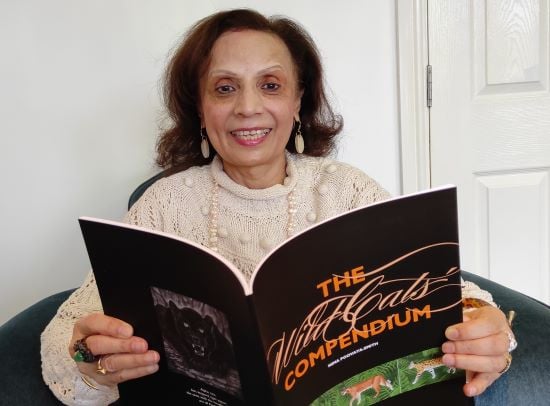
Photo: Tim Smith
My Gurus: Sowing the seeds of possibility
Shanaz Gulzar led Bradford's successful bid to become City of Culture 2025. Having now taken up the reins as its Creative Director, she reflects on the people who have inspired her career and will inform her choices for the festival.
For someone of my race, class and gender – and geography, I had very few role models to forge my own creativity. Surprisingly, I now find my parents were fundamental to my creativity, despite them feeling they didn’t belong in the world of art.
Major Road Theatre Company
I knew my journey would be different from that of my peers. That was both exciting and hard – trying to find the creativity to challenge the status quo. At 17, I discovered Major Road, a Bradford-based company with a pioneering approach to socially-engaged practise.
There I was able to explore the role of the artist, working in communities, with people-centred ideas, and with ambition and wit. I performed in a show, though don’t ask me to act or sing again, it's not where my talents lie. But the overall experience taught me how to make life-changing, ambitious work with communities.
Bradford Festival
At the same time, I was volunteering with Bradford Festival, making outdoor, site-specific events with stages on lakes and on hilly parks, with giant puppets and music. It was as if the world had come to Bradford to make playful and artform-bending experiences. I knew then that that’s what I wanted to make too.
Kully Thiarai
As a teenager thinking about a career in the arts, wondering how someone of my class, race, gender and Northern-ness could be an artist, I came across Kully. She was a young artist herself and an assistant director on a show I was in.
I didn’t have the courage to introduce myself at that time but knowing she existed and that we had at least some commonality helped me think it was the start of a possibility. A few years later we bumped into each other, and I reminded her of the show and the impact she’d had on my thinking and aspirations even though we hadn’t spoken.
A fearless advocate for the transformative power of art, Kully is now a friend and ally. We often share our experience, where it’s similar and where we differ – her journey starting in theatre, mine in contemporary art. I like to think I give her as much as she gives me.
James Turrell
I first saw James’s Gasworks: A Ganzfeld Sphere at the Henry Moore sculpture studio at Dean Clough. I remember it as an immersive bath of colour, a large domelike structure, looking like it had come out of a 1960s sci-fi film. One person at a time lay on a bed and then pushed in to be bathed in light.
I loved the experiential nature of the work, the intersection of science, tech and art, ‘the presence of space’, the imagination to push audience experience and everything about it.
I’ve never met James but feel a kinship. I thought if James Turrell can make art, bringing different disciplines together, so can I. I’ve tried to keep to that, challenging myself and the artists I work with. Thinking about the opportunity that Bradford UK City of Culture 2025 gives for interdisciplinary work is so exciting.
Dr Nima Poovaya Smith
I like to describe Nima as a powerhouse of a human being and a brilliant curator who generously supports emerging curators and artists. Nima curated An Intelligent Rebellion: Women Artists of Pakistan, the first exhibition of its kind in Cartwright Hall in Bradford. She developed one of the most significant collections of contemporary art in the UK by artists from south Asian, African and Caribbean heritages.
 Nima Poovaya-Smith Photo by Nilesh Mistry.
Nima Poovaya-Smith Photo by Nilesh Mistry.
She also devised Pillars of Light in 2006, a yearlong festival across all Yorkshire exploring the secular in Islamic Arts. I worked with her as a producer to help deliver it. We would spend hours discussing in detail how audiences might interact and engage with it or not. And we discussed how art comes in many guises and how those who interpret and curate have a responsibility to both artist and audience.
Mohammed Gulzar and Fazilat Jan
I don't think my parents will ever fully understand the influence they had on me and on my understanding of what it means to be inclusive in my approach to arts and culture. They taught me the importance of avoiding stereotyping and generalisation – it’s lazy thinking.
They continuously surprised me and challenged my assumptions about how they engaged with and understood museums and galleries. They would say “it isn’t our world” or “we don’t belong here”. But when they were there in that world, they would always find a way to connect.
My most memorable moment with them was at The Hepworth Wakefield at an exhibition of Hepworth’s sculptures and the tools she used to make her work. I took them into the gallery only to realise we were in the room with nudity.
You can imagine the comedy that ensued with me trying to manage how they saw the nudity. In the end, it was them that managed my assumptions. Mum was more interested in the abstract sculptures and what they were trying to say if they weren’t representative. Dad focused on the tools and how they were used to make art. Lesson learned.
Join the Discussion
You must be logged in to post a comment.